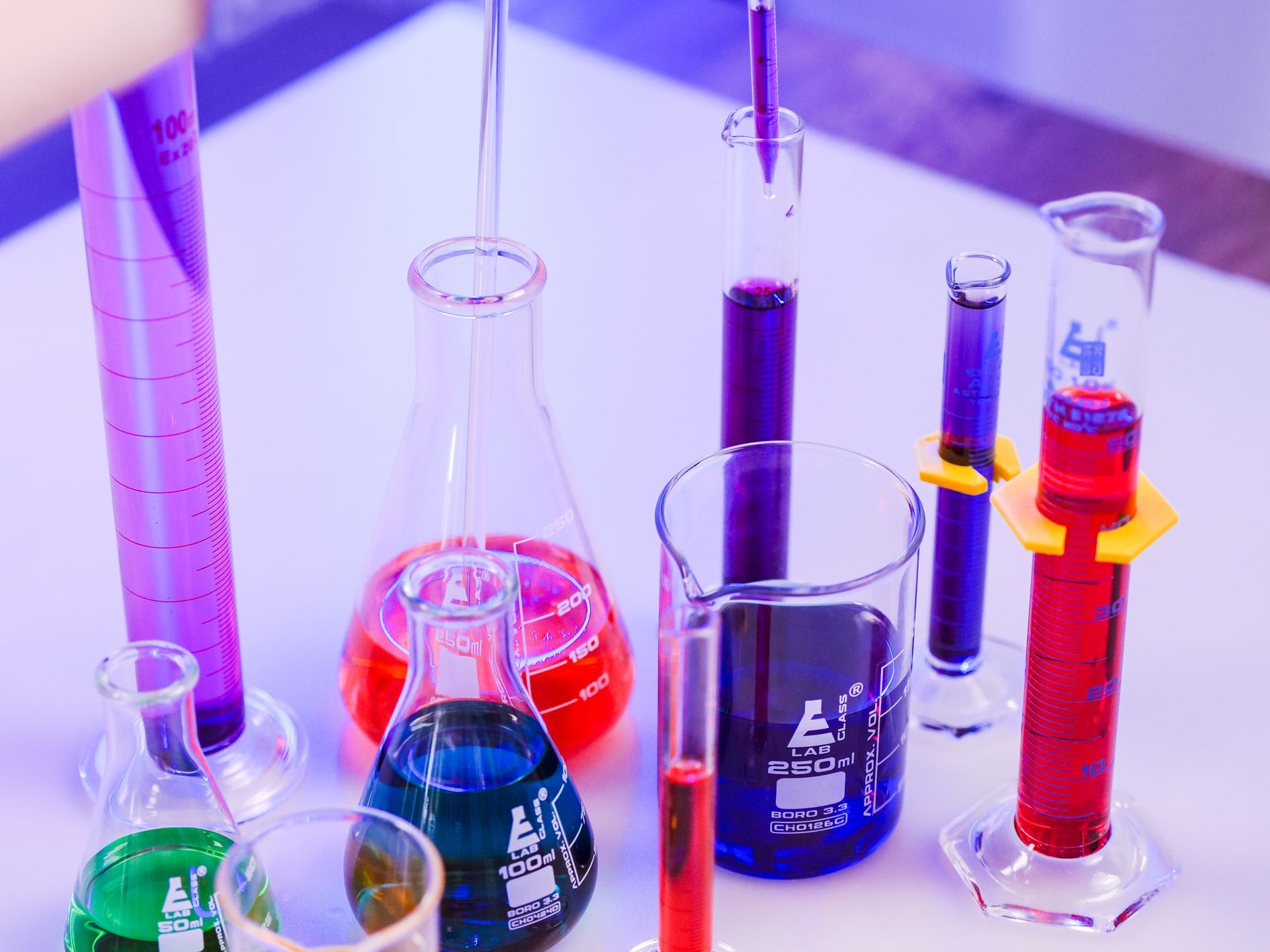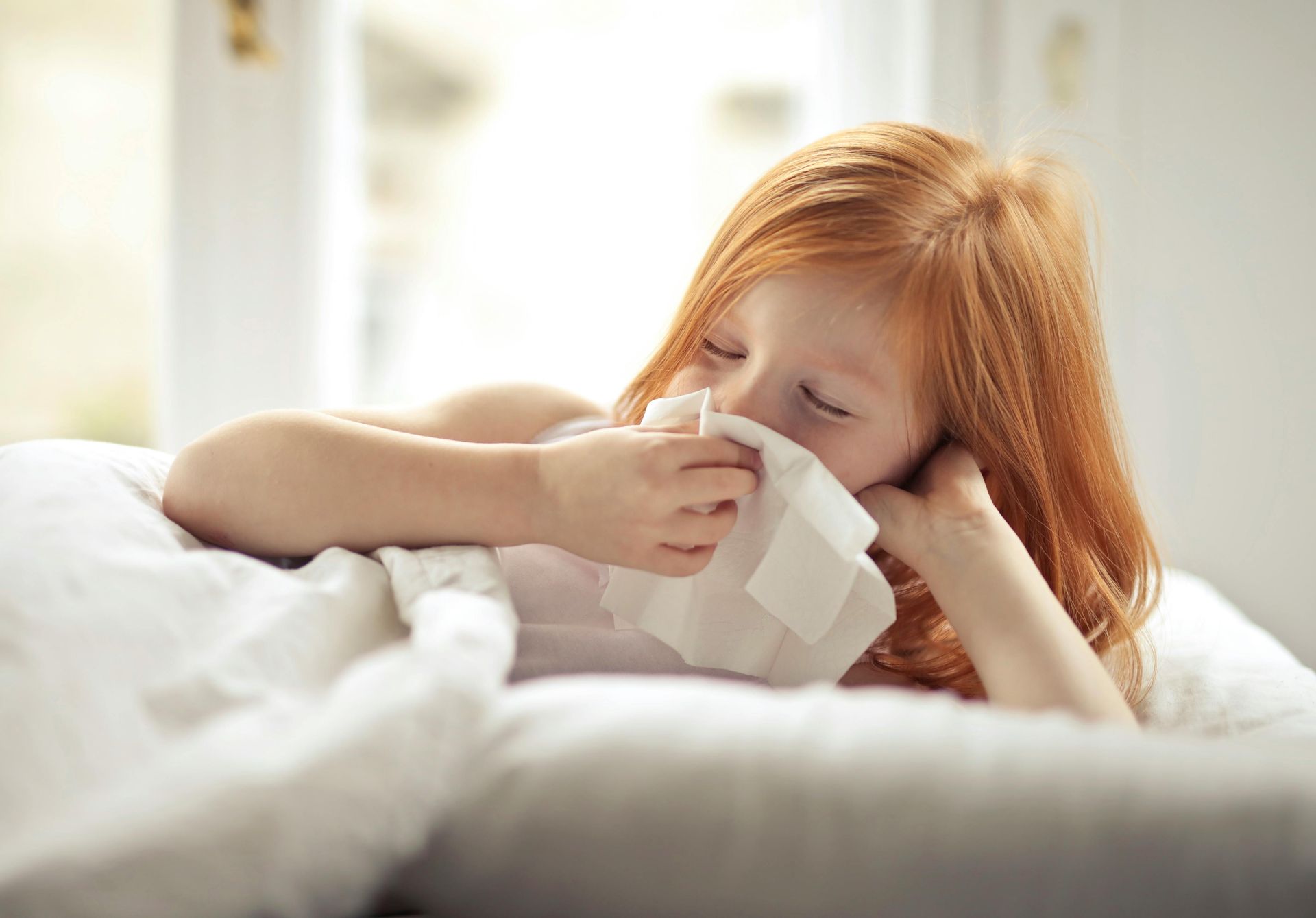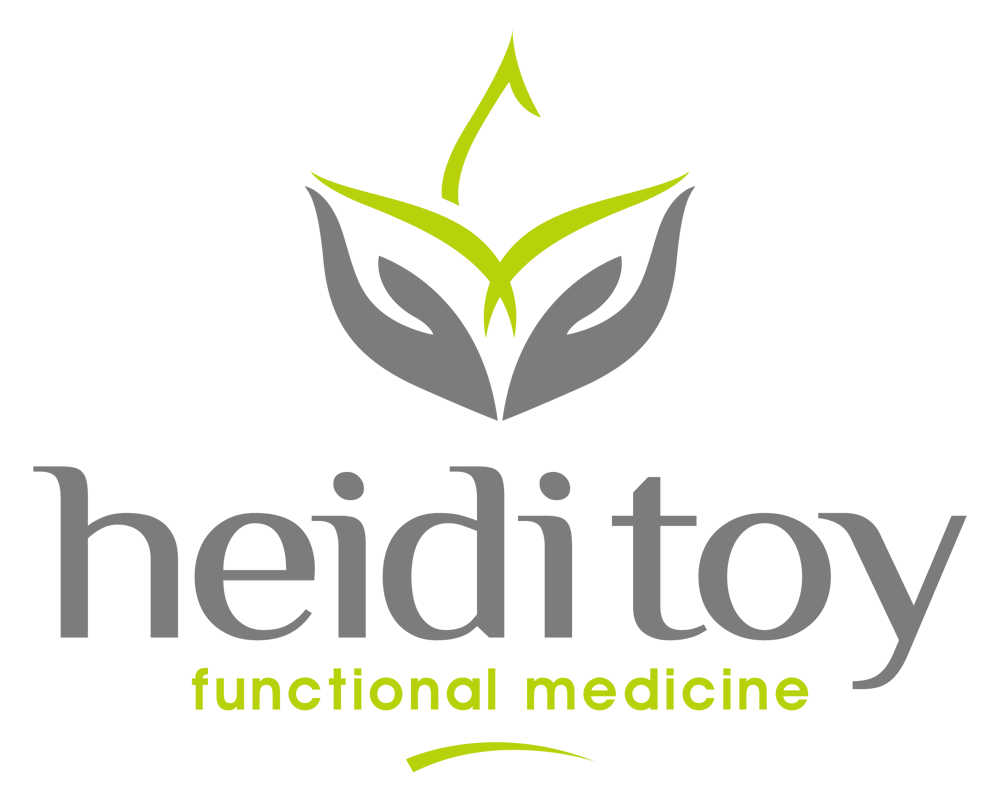Personal Products & Toxic Chemicals
Toxic Chemicals in Products You Use Every Day
The U.S. Food and Drug Administration has no authority to assess the safety of beauty products before they go on the market. Unlike food and drug manufacturers, the cosmetics industry is free to use thousands of synthetic chemicals in all sorts of products – and they do. Many chemicals restricted or prohibited by the European Union aren't restricted in the United States.

According to Harvard's School of Public Health, "In the United States, the average person is exposed to more than a hundred chemicals from cosmetics, soaps, and other personal care products before leaving the house in the morning."
The health questions boil down to two:
- What happens to the body after the skin absorbs certain compounds day after day, year after year
- What happens to the environment as chemicals from these products are washed down the drain?

1. Chemical filters in sunscreens. Many of the sunscreens on the market use either mineral or chemical filters to block sunlight. Products that use chemical filters usually contain a combination of two or more of these ingredients: avobenzone, homosalate, octinoxate, octisalate, octocrylene and oxybenzone. Mineral sunscreens contain titanium dioxide and/or zinc oxide.
Concerns about the toxicity of sunscreens began to rise when laboratory tests revealed that certain chemicals could mimic hormones or act as hormone-disrupters. The Environmental Working Group (EWG) says that sunscreens deserve harsh scrutiny because most chemical formulas are known to penetrate the skin to some extent. Two European studies found sunscreen chemicals present in mother's milk, so exposure to developing fetuses and newborns is also a concern.
According to EWG, the most harmful and widely used chemical in sunscreen sold in the U.S. is oxybenzone. EWG warns consumers to avoid oxybenzone because it can permeate the skin and potentially cause allergic reactions and disturb hormones. In women, preliminary studies also suggest a correlation between higher levels of oxybenzone and an increased risk of endometriosis and lower birth weight in females.
Mineral sunscreens generally score much better in EWG's ratings and are considered far safer. EWG advises consumers to look for sunscreens that contain titanium dioxide or zinc oxide.
Nanoparticles: Tiny particles of such things as zinc oxide and titanium oxide in cosmetics and sunscreens could cause cell damage, but they're tough to track. Some manufacturers now advertise products that are free of nanoparticle-size ingredients.
Beware the information on some alternative health sites that promote coconut oil as a safer alternative to sunscreen. These sites maintain that coconut oil is a great way to get a healthy tan and Vitamin D from the sun without the risk of burning. But coconut does not provide a notable sun protection factor (SPF). So, exposing yourself to the sun after slathering yourself with it is really not much better than using no skin protectant at all.
2. Parabens. They are used as anti-microbial preservatives and are found in body care products such as deodorants, shampoos, lotions, and facial cleansers. The safety of parabens is controversial. They are routinely found in breast cancer tumors, but it has not been determined whether they caused or contributed to the cancer.
However, it is noted that absorption of parabens are a concern due to their hormonal properties. Parabens can mimic estrogen at an extremely weak level. Estrogen causes both healthy and cancerous cells to divide within the body, which accounts for its adverse role in breast cancer.
In one Danish study, parabens were also found in the urine of healthy male participants after lotions containing parabens were applied to their skin. This study determined that because parabens are absorbed, metabolized, and excreted, they have the potential to cause internal harm even though they have not been determined to be the cause of any diseases at present.
3. Fragrances. Many products use the ambiguous label “fragrance” or “parfum” to show an undisclosed mixture of various chemicals, typically used to created pleasant scents. Diethyl phthalate and phthalates are often lumped into this category, and both have been linked to allergic reactions, endocrine disruption, and organ damage.
4. Phthalates. These are chemicals that act as solvents and can be found in many cosmetics including deodorants, hair sprays, hair gels, and nail polishes. Phthalates are also used as plastic softeners in products such as baby bottles and children’s toys, but are increasingly being eliminated due to disturbing research findings. A study conducted by the U.S. Centers for Disease Control and Prevention found that women between the ages of 20 and 40 years of age had 45 times more phthalates in their bodies than researchers had originally estimated. In another study performed by the University of Missouri, developmental abnormalities in male infants were linked to high amounts of phthalates in their mothers’ bodies.
5. Toluene. A chemical made from petroleum and coal tar, found in nail polish, hair dyes, and fragrance. Toluene can be listed as benzene, methylbenzene, phenylmethane, and toluol. EWG considers toluene to be one of the most toxic ingredients on the market. Research shows that an expectant mother's exposure to toluene vapors may cause developmental damage to the fetus. In other studies, toluene has been associated with immune system toxicity and possibly linked to blood cancer such as malignant lymphoma. However, the EPA has concluded that there is inadequate information to assess the carcinogenic potential of toluene.
The central nervous system is the primary target organ for toluene toxicity in both humans and animals for both short- and long-term exposure. Symptoms of toluene poisoning may include fatigue, sleepiness, headaches, and nausea.
6. Triclosan. This is an antibacterial agent used in antibacterial soaps, deodorants, and toothpastes. EWG classifies triclosan as a high-concern ingredient because several studies have proven that it causes endocrine disruption in low amounts.
Another concern surrounding triclosan is its ability to hinder muscle function. A study conducted at the University of California found that triclosan can impair muscle function in both humans and animals. Triclosan has been proven to penetrate the skin and enter the bloodstream, and has also been found in human breast milk at high levels.
Healthcare researchers have long claimed that use of triclosan can also create drug-resistant germs in the home, leaving individuals more imperiled by infectious disease than they would otherwise be. It's come under new scrutiny after a study revealed that the chemical can sabotage the efforts of helpful bacteria at wastewater treatment facilities while promoting drug resistance in others.
The FDA says there's no evidence that triclosan in personal-care products provides any health benefit, other than its use as an anti-gingivitis and anti-plaque agent in some toothpastes. Because of the alarm created by recent scientific studies, the safety of triclosan is under review by the FDA.
7. Lead & Mercury. Many name brands of lipsticks contain lead because it adds to color and sheen. It can cause brain and nervous system damage. A May 2013 study by the University of California, Berkeley, tested 32 lipstick brands commonly found in drugstores and department stores and found lead in 24 of them, as well as other toxic heavy metals. They found that 68% of the lipsticks exceeded the acceptable daily levels for chromium, a suspected carcinogen linked to stomach tumors, and 22% exceeded recommended levels for manganese, linked to nervous system damage. Mercury, found in the preservative thimerosal, is in some mascaras.
8. Fluoride. It is in most toothpaste. Sodium fluoride is a by-product of aluminum manufacturing, and it can also be found in rat poisons and industrial pesticides. All fluoride toothpastes carry the warning that if more than a pea-sized amount is swallowed, consult a poison control center. Fluoride is not the beneficial additive that is purported to be. It interferes with the normal workings of the thyroid gland and readily crosses the placenta. Fluorides have been used throughout history to alter the behavior and mood of human beings.
9. Sodium Lauryl Sulfate. It makes great suds, but SLS and its chemical cousins sodium laureth sulfate and SLES pose a wide range of questionable risks. In bigger quantities than you are likely to find in a bottle of shampoo, sodium laurel sulfate is a skin irritant. According to the American College of Toxicology, sodium laurel sulfate may stay within the body for up to five days, accumulating in the heart, liver, lungs, and brain. When combined with certain other chemicals, sodium laurel sulfate transforms into nitrosamines, a class of powerful carcinogens that cause the body to absorb harmful nitrates.
10. Propylene Glycol (PEG). An active component in antifreeze, propylene glycol acts as a wetting agent and surfactant in toothpaste. The Material Safety Data Sheets for propylene glycol warn that the chemical can be rapidly absorbed through the skin, with prolonged contact leading to brain, liver, and kidney abnormalities. Factory personnel working with it must wear rubber gloves.
11. Formaldehyde. Yes, the stuff of embalming fluid. It serves as a disinfectant, embalming agent, chemical preservative, and solvent. Formaldehyde is used primarily in nail polish, hair dyes and straighteners, baby soaps, and many cosmetics. It is inhaled and absorbed by the skin and it’s one of the causes of skin allergies to people with sensitive skin. It is a probable human carcinogen. (It is also found in "wrinkle free" types of clothing and is the source of that “new car” smell.)
12. Petroleum distillates. Check for the terms "petroleum," "liquid paraffin," and “mineral oil” in products like baby oil, mascara, hair spray, and foot-odor powder. The European Union restricts or prohibits petroleum distillates because they are possible human carcinogens.
13. DEA. Diethanolamine, or DEA, is in products that foam, especially shampoo and toothpaste. DEA disrupts hormones and forms cancer-causing nitrates. According to Dr. Samuel Epstein, professor of environmental health at University of Illinois, repeated skin exposure to DEA can lead to increased risk of liver and kidney cancers.
14. BHA (butylated hydroxyanisole) and BHT (butylated hydroxytoluene). BHA and BHT are both common chemicals used as a preservative in moisturizers and cosmetics. Both chemicals are known to be endocrine disruptors and have been linked to cancer, skin allergies, and liver, thyroid and kidney toxicity.
15. Anything ending with siloxanes or methicone. Deodorants, moisturizers, hair sprays, mousses, gels and defoamers might include siloxanes or methicone. These chemicals are known to be endocrine disrupters, toxic to the environment and cause a wide range of health issues including cancer, infertility and allergies.

What’s the Alternative?
Can you pronounce the ingredients? Buying organic products will greatly reduce your exposure to toxins. Here are some helpful tips for buying organic personal care items:
- Products that have been evaluated and deemed 100% organic will carry the USDA seal of approval.
- Any products containing at least 95% organically derived ingredients will bear an “organic” label, but not necessarily the USDA seal or agent information. Products that contain at least 70% organic ingredients will be labeled with the phrase “made with organic ingredients.”
- Products that contain less than 70% organics cannot use the term “organic” on the principal display panel, but specific organic components might be listed under ingredients or on the information panel.
Diane MacEachern, author of Big Green Purse (2008), says women spend 85 cents of every dollar in the marketplace and are predisposed to protect the environment and health. That puts them in a strong position to force the greening of products, she argues. "American women have more economic clout than the GDP of China. It's huge."
As a start, she says, assess the array of personal-care products you use. Are there items you can do without? Eliminate one, or several, from your daily repertoire and see if you really miss any of them. Plenty of products you use probably have similar purposes. "This is one place you can save a lot of money.”
Check out the labels. There's some merit in choosing products with the shortest ingredient lists. The more complicated the formulation, the more likely it has lots of synthetic ingredients. Marketing words on the label such as "natural," "botanical" and even "organic" might mean very little, because no government agency is monitoring their use.
You can refer to the EWG’s Skin Deep Database to research the toxicity of chemicals contained in a wide array of cosmetics. At www.cosmeticsdatabase.com , the Environmental Working Group has the searchable database "Skin Deep." Type in the name of a product to find the ingredients on that product's label plus an assessment of the health risks of those ingredients.
The Environmental Working Group site also offers baby product suggestions, including shampoo, soap, wipes and diaper cream, that avoid troubling chemicals such as California Baby and Aveeno. Go to
www.cosmeticsdatabase.com/special/parentsguide
The
Natural Products Association this year established a certification program that defines "natural" and uses a seal to designate skin and hair products that meet the standards. Certified products must be made from at least 95 percent nonsynthetic ingredients.
The Campaign for Safe Cosmetics, a coalition of health, environmental and consumer-rights groups, offers a "compact for safe cosmetics." Companies that sign the agreement pledge not to use chemicals that are known or are strongly suspected of causing cancer. They pledge to replace chemicals with safer alternatives. For a list, go to
www.safecosmetics.org.
Don't Miss Out On More!

Heidi Toy FNTP
I help people all over the world heal by identifying and treating the root cause of their body imbalances. Through diet and nutrition, I guide them towards wholeness and balanced lives.
Heidi Toy Functional Medicine Blog














































































































